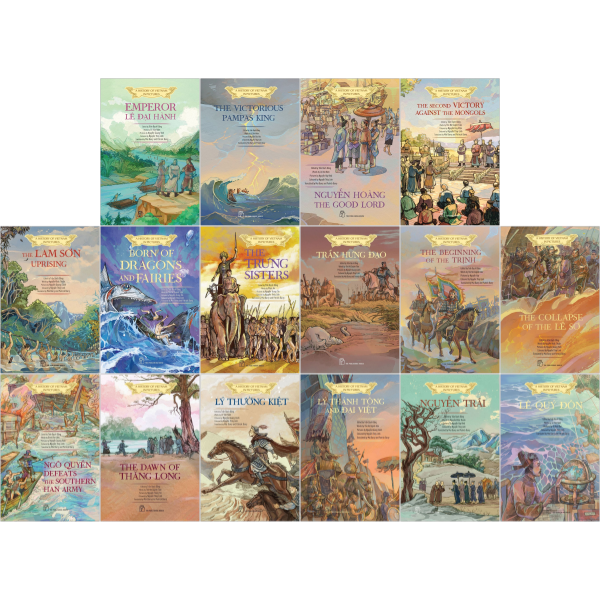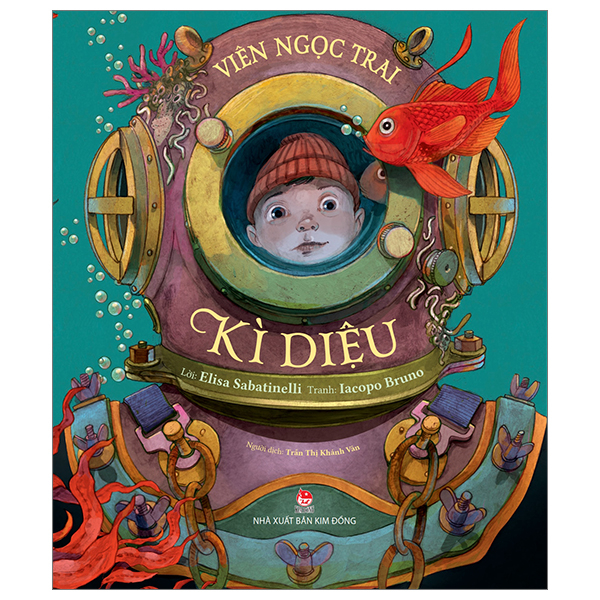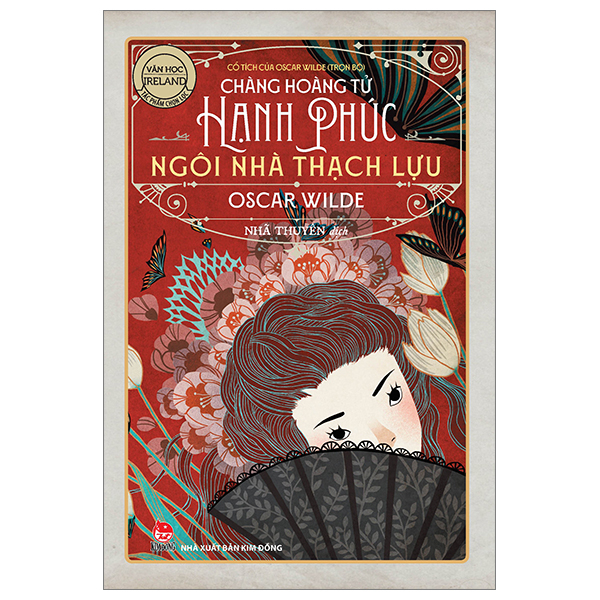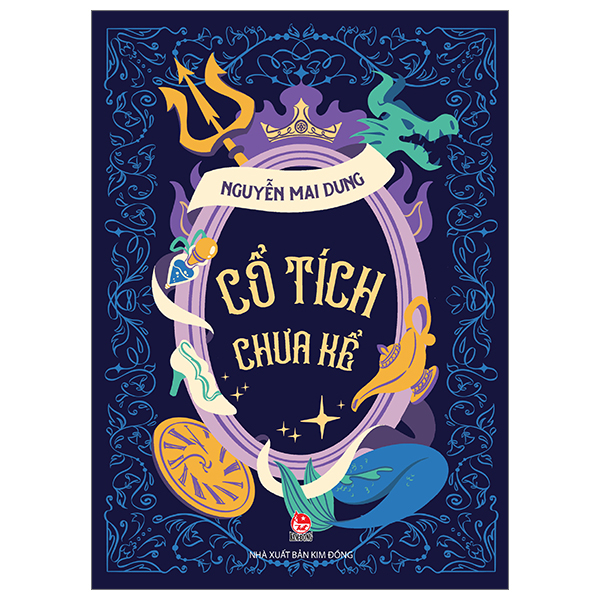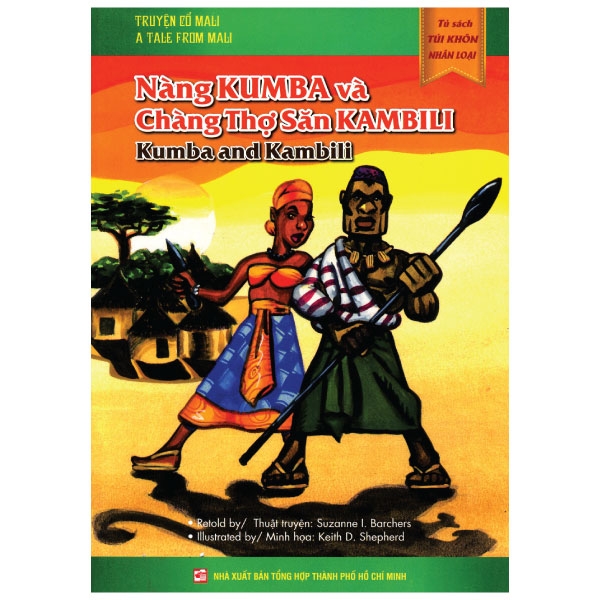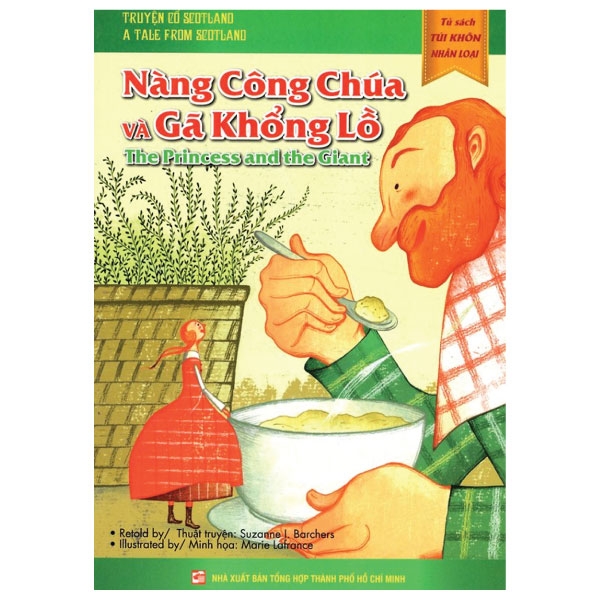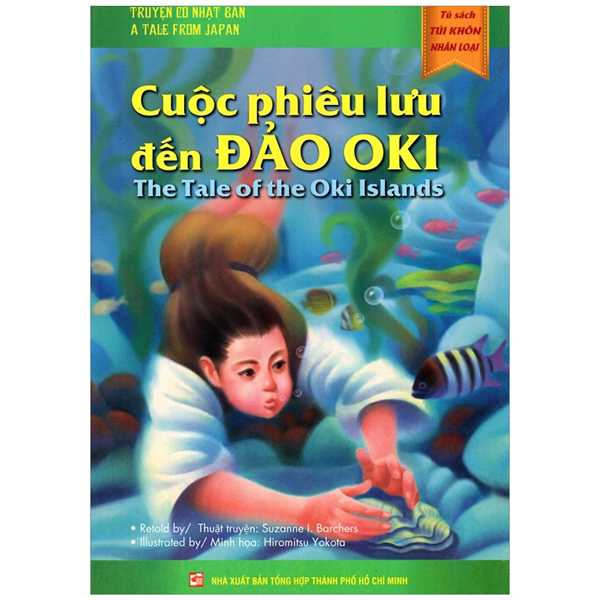Boxset A History Of Vietnam In Pictures (In Colour) (Bộ 16 Cuốn)
1. A History Of Vietnam In Pictures (In Colour) - Emperor Lê Đại Hành
With the assassination of both Đinh Tiên Hoàng (First Emperor of the Đinh) and his son Đinh Liễn, the country Đại Cồ Việt again faced a grave challenge - a matter of survival. The new king was still a child. He was far from ready for his big role. Neighbouring states were yet to give up their expanding ambitions. Across the northern border, the Tống (Song dynasty) was keenly watching Đại Cồ Việt’s every move. So was Chiêm Thành (Champa) in the south.
In that fragile situation, Empress Dowager Dương Vân Nga put the country first. She entrusted power to the right person so that he could guide the country through fierce waves of history. Lê Hoàn ascended to the throne, blessed by Heavens. He was widely supported by the public. He quickly defeated the Tống, stabilised the Chiêm and offered great reassurance to the common people. Peace and order were restored from north to south.
2. A History Of Vietnam In Pictures (In Colour) - The Victorious Pampas King
Dương Tam Kha’s usurpation of the Ngô fuelled widespread riots throughout the land. The notorious Riot of the Twelve Rebellious Warlords went on for more than 20 years (994-968). It only ended when Đinh Bộ Lĩnh unified the country and founded Đại Cồ Việt- the first absolute monarchy in the history of Việt Nam.
Đinh Bộ Lĩnh’s beginning was humble- a buffalo boy in the countryside. This buffalo boy grew up to be the hero who brought peace with his outstanding talent and wisdom. In the year Mậu Thìn (968), Đinh Bộ Lĩnh became Emperor. His title was Đại Thắng Minh Hoàng Đế (The Great Glorious Victorious Emperor). He gave the country the name Đại Cồ Việt and chose Hoa Lư to be the capital. With this he laid down the foundation for an independent and unified Việt Nam in relation to her neighbour China.
(Từ một đứa trẻ chăn trâu nơi chốn thôn dã, chàng trai Đinh Bộ Lĩnh đã dẹp yên nội loạn bằng tài năng, mưu lược, sáng suốt hơn người. Năm Mậu Thìn (968), Đinh Bộ Lĩnh lên ngôi Hoàng đế, tự xưng là Đại Thắng Minh Hoàng đế, đặt quốc hiệu là Đại Cồ Việt, đóng đô ở Hoa Lư. Từ đây, nhà Đinh đặt nền móng sáng lập nhà nước phong kiến trung ương tập quyền đầu tiên ở nước ta, khẳng định vị thế độc lập, thống nhất, tự chủ của dân tộc ta trước Trung Hoa.)
3. A History Of Vietnam In Pictures (In Colour) - Nguyễn Hoàng The Good Lord
One of the major parts of Vietnam’s history was the Southward movement or “Nam tiến”. The movement took 700 years and brought about three fifths of the country’s present-day territory.
Nguyễn Hoàng was a key figure in this process of territorial expansion. He laid the foundation for the southern part of the country and the Nguyễn dynasty later.
For his 55-year career of governing and developing the southern land, Nguyễn Hoàng was often regarded as a visionary. He was also known for being wise, kind and was loved by the common people who gave him the name “chúa Tiên”, literally meaning the saintly Lord.
(Lịch sử nước ta đã trải qua nhiều phen biến thiên. Theo dòng biến thiên ấy, lãnh thổ nước ta dần được mở rộng về phía nam. Tiến trình này còn được gọi là: “Nam tiến” và kéo dài gần 700 năm, đem lại cho nước ta ba phần năm lãnh thổ như hiện nay. Trong tiến trình ấy, Nguyễn Hoàng có thể được xem là người có vai trò quan trọng trong việc mở rộng bờ cõi nước ta cũng như tạo tiền đề cho việc xây dựng vùng đất phía nam và cho cả vương triều Nguyễn sau này. Trong suốt 55 năm cai trị và phát triển vùng đất phía nam của mình, Nguyễn Hoàng đã được đánh giá là người có tầm nhìn xa trông rộng, khôn ngoan, có lòng nhân đức, biết thu phục lòng người nên được nhân dân cảm mến, gọi là chúa Tiên.)
4. A History Of Vietnam In Pictures (In Colour) - The Second Victory Against The Mongols
The Mongols failed in their first attempt to invade Đại Việt. But they soon planned a return. It was not like them to give up easily. After all they had grown from a small ethnic group to an empire that spread from Asia to Europe.
The Trần court was all too aware of this imminent threat. During time of peace, Trần Thủ Độ and Trần Hưng Đạo worked hard to ready their troops. With strong resolve and solidarity, once again Đại Việt successfully pushed back the Mongols who had ravaged many parts of the world back then.
5. A History Of Vietnam In Pictures (In Colour) - The Lam Sơn Uprising
In the spring of the year Mậu Tuất (1418), Lê Lợi took the title Bình Định Vương (“Pacifying King”), led his troops and united the people to protect the country in the Lam Sơn uprising.
The early days of Lam Sơn were difficult but the troops always kept their faith in the ultimate victory.
6. A History Of Vietnam In Pictures (In Colour) - Born Of Dragons And Fairies
The series "A History of Vietnam in Pictures" presents the history of Vietnam in a brief, interesting and systematic style through concise tales and beautiful pictures.
Our very first kings were the Hùng kings. They built the foundation for the nation of Văn Lang - the very first page in our country’s history. This was also the time of beautiful stories which were first told by our ancestors before the start of writing. These stories give us our ancestors’ thoughts and dreams. Most of the stories, as you can guess, are legends. Nonetheless they teach us about a time so long ago.
This book contains two such stories: Born of Dragons and Fairies, and The Legend of Saint Gióng.
How much “history” is there in these tales? We do not know for sure. Still, the stories contain a lot of historical details, ancient traditions and customs including festivals that are still being celebrated in our time.
With these we have a precious glimpse of the very first days of our people and country.
7. A History Of Vietnam In Pictures (In Colour) - The Trưng Sisters
The series A History of Vietnam in Pictures presents the history of Vietnam in a brief, interesting and systematic way through concise tales and beautiful pictures.
The Trưng Ladies were Trưng Trắc and Trưng Nhị, two best known female heroes in Việt Nam. Together with her sister, Trưng Trắc led an uprising against the Hán invaders, liberated the country and became Queen. This infuriated the Hán Emperor. He ordered Mã Viện - a notoriously cunning general to invade Việt Nam again. On the sixth day of the second month in the lunar year Quý Mão (43 AD), faced with an enemy much stronger than their own army, the ladies threw themselves into the Hát river to avoid falling into the hands of the enemy.
8. A History Of Vietnam In Pictures (In Colour) - Trần Hưng Đạo
The imminent Mongol’s invasion was a matter of life and death for Đại Việt. It was a testing time for everyone from the court to the common people. Traitors and heroes revealed themselves. One such hero, and arguably the most famous was Commander-in-chief of the armies (Quốc công Tiết chế) Trần Hưng Đạo.
Prince Trần Hưng Đạo always put the country above everything else. He made peace with his sworn enemy so they could work together for the cause. He promoted talented people regardless of their backgrounds. He was not only a military mastermind but also a literary talent with masterpieces well-revered in history.
9. A History Of Vietnam In Pictures (In Colour) - The Beginning Of The Trịnh
Trịnh Kiểm (1503-1570) was born to a poor farming family in the village of Sóc Sơn, Vĩnh Ninh, Thanh Hóa (nowadays Vĩnh Lộc, Thanh Hóa Province). Despite not having a proper education, Trịnh Kiểm was exceptionally intelligent and brave. Soon he became a close confidant of the courtier Nguyễn Kim.
When Nguyễn Kim died, all his power fell into the hands of Trịnh Kiểm who then laid the foundation for the Trịnh’s rule in Đàng Ngoài.
(Trịnh Kiểm vốn xuất thân trong một gia đình nông dân nghèo ở trấn Thanh Hóa. Tuy không được học hành nhiều nhưng ông rất thông minh, can đảm, lại mưu lược hơn người nên nhanh chóng trở thành tâm phúc của Thái phó Nguyễn Kim. Nguyễn Kim mất, binh quyền về tay Trịnh Kiểm và Trịnh Kiểm trở thành người mở đầu sự nghiệp nắm quyền của họ Trịnh ở Đàng Ngoài.)
10. A History Of Vietnam In Pictures (In Colour) - The Collapse Of The Lê Sơ
Emperor Túc Tông did not live long. He followed his ancestors soon after becoming emperor. This was a turning point for the dynasty. Túc Tông’s successors were a mixture of evil, debauchery and plain incompetence. The courtiers were not loyal. There were many dissidents. It seemed too much for whoever who was the emperor at the time.
Enter Mạc Đăng Dung. An exceptionally clever and ambitious person, Mạc slowly drew all authority to himself, rendering the emperor powerless. He was certainly in the right place at the right time. What Mạc did was like felling a rotten tree, rather than struggling with one in its prime.
(Vua Túc Tông mệnh yểu, nối nghiệp lớn không được bao lâu thì theo các tiên vương. Nhà Lê gặp bước ngoặt lớn. Các vua sau tên thì tàn ác, kẻ thì xa hoa trụy lạc, người thiếu sáng suốt. Triều đình lại thiếu bề tôi trung, quyền thần nổi lên như ong. Các vua đều không có đủ năng lực điều hành đất nước khi biến loạn xảy ra. Đúng khi ấy, Mạc Đăng Dung xuất hiện. Dựa vào sự thông minh lẫn mưu mô của bản thân, ông đã dần thâu tóm quyền lực, vô hiệu hóa vua Lê, thưc hiện mưu đồ của bản thân. Dầu tham vọng nhưng không thể phủ nhận rằng Mạc Đăng Dung chỉ là người xô ngã cây gỗ mục chứ không phải là người đốn ngã một cây tốt tươi.)
11. A History Of Vietnam In Pictures (In Colour) - Ngô Quyền Defeats The Southern Han Army
The Five Dynasties and Ten Kingdom period (907-979) in Imperial China was one of upheavals and divisions. This gave the Việt people a precious opportunity to claim their independence. The Khúc and Dương families did just that. However, in name, they were still “Tiết độ sứ”- military governors serving the northern “heavenly kingdom”.
Independence in name was finally realised with Ngô Quyền’s victory on the Bạch Đằng River. The Southern Hán (Southern Han) finally give up their ambition to invade the Việt country. This victory put Ngô Quyền on the throne and ushered in a time of true independence. This is a big turning point in our history - the start of a remarkable era full of achievements under subsequent dynasties: The Đinh, The Early Lê, The Lý, The Trần and The Hồ.
The story “Ngô Quyền defeats the Southern Hán Army” is about this important event. We hope you enjoy reading it as much as we enjoyed telling it.
12. A History Of Vietnam In Pictures (In Colour) - The Dawn Of Thăng Long
Lý Công Uẩn founded the Lý dynasty at the dawn of the 11th century. The Lý dynasty lasted over 200 years and is one of the three most stable dynasties in the history of Vietnam. The Lý were successful in their undertaking from the beginning. They restored peace and order in many parts of the country. They defended borders north and south. The kingdom went from strength to strength with later kings continuing the good work of their predecessors. In the time of the Lý, Vietnam prospered and thrived.
One of the greatest achievements of the Lý was the relocation of the capital from Hoa Lư to Thăng Long. In the spring of 1010 Emperor Lý Thái Tổ wrote and issued the Edict on the Transfer of the Capital. The move signalled a new era for the country.
13. A History Of Vietnam In Pictures (In Colour) - Lý Thường Kiệt
The history of Vietnam is one of heroes. Talented leaders, both military and otherwise have always emerged in times of trouble.
There was one such time when the Song in the North was ready to launch their invasion whilst the Champa in the South was planning their revenge. The two enemies came together to bring their wrath on Đại Việt.
Đại Việt was then a small country with a young king. Fortunately, the king had a team of talented advisors. Lý Thường Kiệt was one such person. He was a scholar as well as a military leader. He was loyal and dedicated to his country. He made peace with his enemy Lý Đạo Thành so that they could work together. As a man of both talent and virtue, Lý Thường Kiệt became a role model in the history of Vietnam.
14. A History Of Vietnam In Pictures (In Colour) - Lý Thánh Tông And Đại Việt
Emperor Lý Thái Tổ laid the foundation for the Lý Dynasty. His grandson Emperor Lý Thánh Tông brought about the greatest achievements of this dynasty.
At his coronation Emperor Lý Thánh Tông renamed the country Đại Việt. This name was used for the next 750 years throughout the Lý, Trần, Lê, Mạc and Tây Sơn dynasties.
Like his father and grandfather, Lý Thánh Tông was an exceptional man, excelling in both academia and martial arts. Lý was known for being a kind and just ruler in the history of Việt Nam. He led by example and was well loved by his people. His reign was relatively peaceful. The country was respected by the northern neighbour and feared by the southern one.
Lý Thánh Tông was truly the founding father of the glorious Đại Việt. He built Văn Miếu - the first university of Việt Nam. He fought the Song (1060). He pacified the Champa (1069). The Champa king conceded three châu (regions) to Đại Việt.
(Dựng nên nhà Lý là vua Lý Thái Tổ và làm rạng danh nhà Lý chính là vua Lý Thánh Tông. Khi vừa lên ngôi, vua Lý Thánh Tông cho đổi quốc hiệu là Đại Việt. Quốc hiệu này được sử dụng trong khoảng 750 năm, trải từ qua các vương triều Lý, Trần, Lê, Mạc và Tây Sơn. Lý Thánh Tông là người văn võ song toàn, ông nổi tiếng là một minh quân có nhiều đức độ trong lịch sử Việt Nam. Người dùng đức cai trị nên được trăm họ mến phục, ít có việc giặc giã nhưng vẫn khiến cho phương Bắc kiếng nể, phương Nam kinh sợ. Ông xứng đáng là người mở đầu cho quốc hiệu Đại Việt hiển hách.)
15. A History Of Vietnam In Pictures (In Colour) - Nguyễn Trãi
Nguyễn Trãi was born in a time of turmoil. He understood his time like no one else. It was this wisdom that brought him to Lam Sơn where he helped the forces achieve the ultimate victory and liberate the country.
In a peaceful period, Nguyễn Trãi wanted to help rebuild the country after the destruction of war. However those who had once fought with him then turned against him. Disillusioned with life at the court, he retreated to live a reclusive life, away from everything.
But he was not meant to retire in peace. He was wronged in a most horrific way. The mystery of Lệ Chi Viên (the Lychee Garden) saw Nguyễn Trãi accused of regicide. The punishment for which was the execution of Nguyễn Trãi along with most members of his extended family (tru di tam tộc- literally the killing of three generations).
In 1464 Emperor Lê Thánh Tông cleared Nguyễn Trãi’s name. His descendents were no longer banished and his poetry was collected. The Emperor decorated Nguyễn Trãi with his well known verse “Ức Trai tâm thượng quang khuê tảo” - meaning “the heart of Ức Trai [Nguyễn Trãi’s pen name] is as bright as the morning star.”
16. A History Of Vietnam In Pictures (In Colour) - Lê Quý Đôn
Lê Quý Đôn was a mandarin serving under the Lê trung hưng (Revival Lê or Later Lê Restoration) dynasty. He was also a renown poet and a great scholar in Vietnam’s feudal history.
Lê’s life was spent in the turmoil of the 18th century. The court was deeply corrupt, and the common people lived in difficult poverty. One would have thought Lê might never have a chance to realize his full potential. But Lê Quý Đôn was also a man with great willpower and an insatiable thirst for knowledge. Lê Quý Đôn thrived in the face of adversity. His name lived on as one of the great minds in Vietnam’s history. His life was one of utmost virtue.
(Lê Quý Đôn là vị quan thời Lê trung hưng, cũng là nhà thơ và được mệnh danh là "nhà bác học lớn của Việt Nam trong thời phong kiến".
Lê Quý Đôn sống trong thế kỷ 18 đầy loạn lạc, triều đình nhiễu nhương, nhân dân cơ cực. Vẫn tưởng rằng tài năng ấy sẽ bị chôn vùi, nhưng chính nghị lực cá nhân và tinh thần ham học hỏi đã để lại cho lịch sử một nhân tài kiệt xuất, một con người tài đức vẹn toàn.)
1. Boxset A History Of Vietnam In Pictures (In Colour) (Bộ 16 Cuốn)
2. Phí Bảo Quản Hàng Hoá

